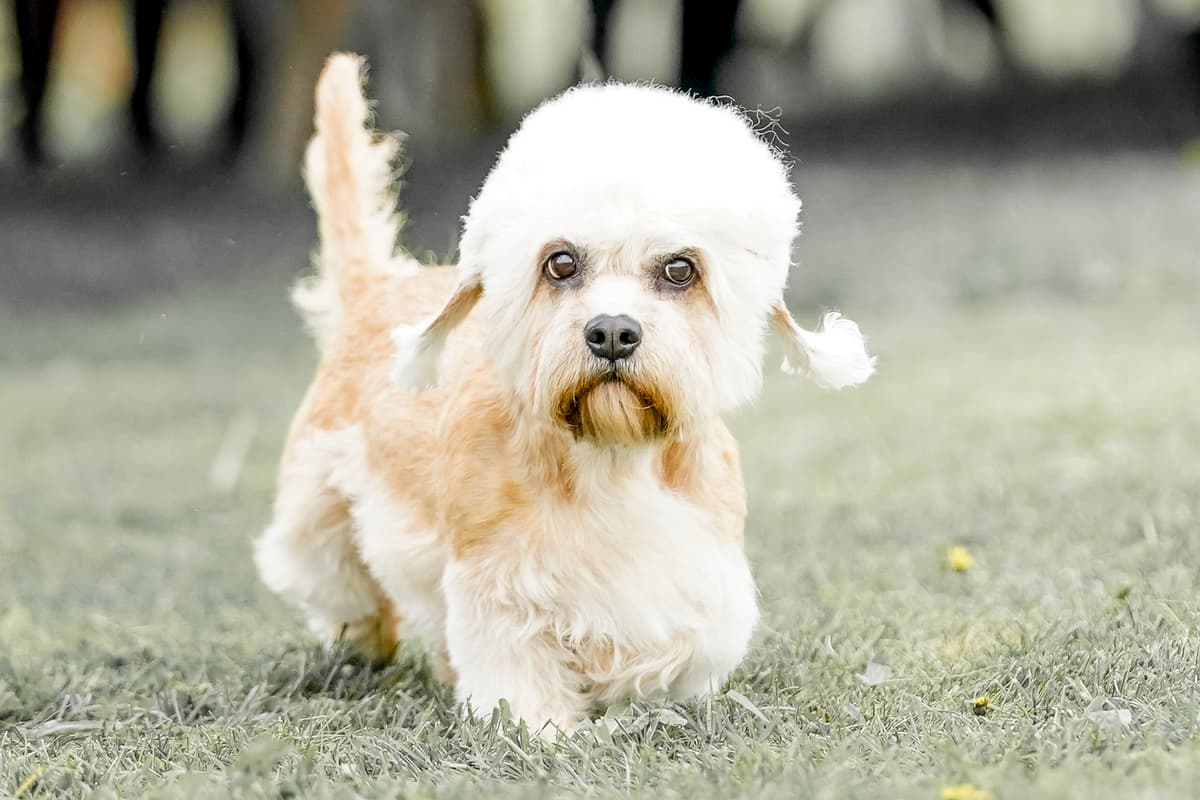Dandie Dinmont Terrier vs Labrador Retriever
Discover the differences between Dandie Dinmont Terrier and Labrador Retriever to make the best choice for your situation.
Try different breeds

Dandie Dinmont Terrier
Distinctive with a long body and silky topknot, this affectionate terrier charms with intelligence and loyalty. Adaptable and alert, it thrives as a devoted companion.

Labrador Retriever
Eager, friendly, and intelligent, this breed loves being part of an active family. Their gentle nature and loyalty make them outstanding companions for all ages.
Quick comparison
Small
8–11 kg
Crisp topcoat, soft undercoat
12–15 years
8–11 kg
Moderately active
Large
29–36 kg
Short double coat, water-resistant
10–12 years
25–32 kg
High energy
Personality & behavior
Compare the personality traits and behavioral characteristics of both breeds.
Dandie Dinmont Terrier
Generally sociable with family and familiar people
Quick learner, responds well to training
Moderate exercise needs, not overly active
Enjoys games but not constantly playful
Adjusts well to new living situations
Labrador Retriever
Warm and sociable with people and animals
Quick learner, responds well to training
High stamina, enjoys active pursuits daily
Loves games and interactive activities
Adjusts easily to new situations and environments
Care needs
Exercise, grooming, and daily care requirements
Dandie Dinmont Terrier
Intervertebral disc disease, glaucoma
Labrador Retriever
Hip dysplasia, elbow dysplasia
Suitability
How well each breed fits different living situations and families
Dandie Dinmont Terrier
Good companion
Their affectionate, manageable nature suits first-time owners with moderate dedication
Very suitable
Small size and moderate energy make them comfortable in apartments
Moderately suitable
Enjoy walks but do not require intense activity or constant stimulation
Supervised only
Tolerate gentle children but prefer calm, respectful handling
Selective tolerance
Can coexist with other pets if socialized from puppyhood
Not ideal
Dislike being left alone and may develop separation anxiety or behavioral issues
Labrador Retriever
Great choice
Patient and eager to please, Labradors are manageable for most first-time owners.
Not ideal
Labradors need space and exercise, so apartments can limit their activity needs.
Perfect fit
High energy and stamina make them excellent for active individuals or families.
Highly suitable
Gentle temperament and playful nature make them safe and loving with young children.
Very friendly
Generally sociable and get along well with other dogs and pets.
Prone to anxiety
Extended alone time can lead to boredom and destructive behaviors in this breed.
Breed strengths
What each breed excels at and their best qualities
Dandie Dinmont Terrier
- Loyal and affectionate with family
- Good with respectful children
- Moderate exercise needs suit urban living
- Low-shedding, hypoallergenic coat
- Generally healthy and long-lived
Labrador Retriever
- Friendly and sociable with people and dogs
- Highly trainable and eager to please
- Excellent with children and families
- Strong retrieving and swimming abilities
- Generally adaptable to various living situations
Challenges & considerations
Potential challenges and considerations for each breed
Dandie Dinmont Terrier
- Prone to stubborn, independent streak
- Early socialization essential for friendliness
- Can be reserved with strangers
- Back issues due to long spine
- Requires regular coat grooming and trimming
Labrador Retriever
- Prone to obesity without portion control
- Can become destructive if under-exercised
- Heavy seasonal shedding requires regular grooming
- May develop hip or elbow dysplasia
- Needs significant daily physical activity
Ready to choose your perfect breed?
Learn more about each breed or compare other breeds to find the perfect match for your lifestyle.
Discover more helpful tools
Make use of our other free tools to get the most out of your pet experience
